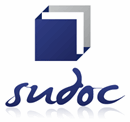Analysis of ISO 37122 Transport Indicators
Case Study of Passo Fundo-RS
DOI:
https://doi.org/10.17271/23178604123820245515Keywords:
Urban Indicators, Environment, Public healthAbstract
The use of digital technologies has become increasingly present in urban spaces, and the management of the generated data aims to improve the efficiency of urban services, optimizing resources and increasing the quality of life of its inhabitants. In this sense, the objective of this article is to analyze the Transportation indicators of NBR ISO 37122 - Sustainable cities and communities - Indicators for smart cities, in the context of the city of Passo Fundo, in Rio Grande do Sul. In addition, it intends to investigate the level of development of the city in relation to these indicators, verifying those that lack investment by public management, and which initiatives the city has implemented or plans to implement aiming at improving the analyzed indicators. In the research methodology, a bibliographic review was initially carried out on the themes of urban indicators, Smart Cities, Transportation and ISO 37122, soon after, a data survey was carried out in relation to the Transportation indicators of ISO 37122 and the city of Passo Fundo-RS. Based on the results, it was possible to observe the urban development of the municipality in relation to the indicators analyzed, as well as to observe the results of urban actions implemented in the scope of transportation and urban mobility. Furthermore, the relevance of data collection was determined with regard to urban indicators, which are important tools for the planning and development of cities, being decisive in directing public policies and investments by urban management.
Downloads
Downloads
Published
Issue
Section
License
Copyright (c) 2024 Technical and Scientific Journal Green Cities

This work is licensed under a Creative Commons Attribution 4.0 International License.















